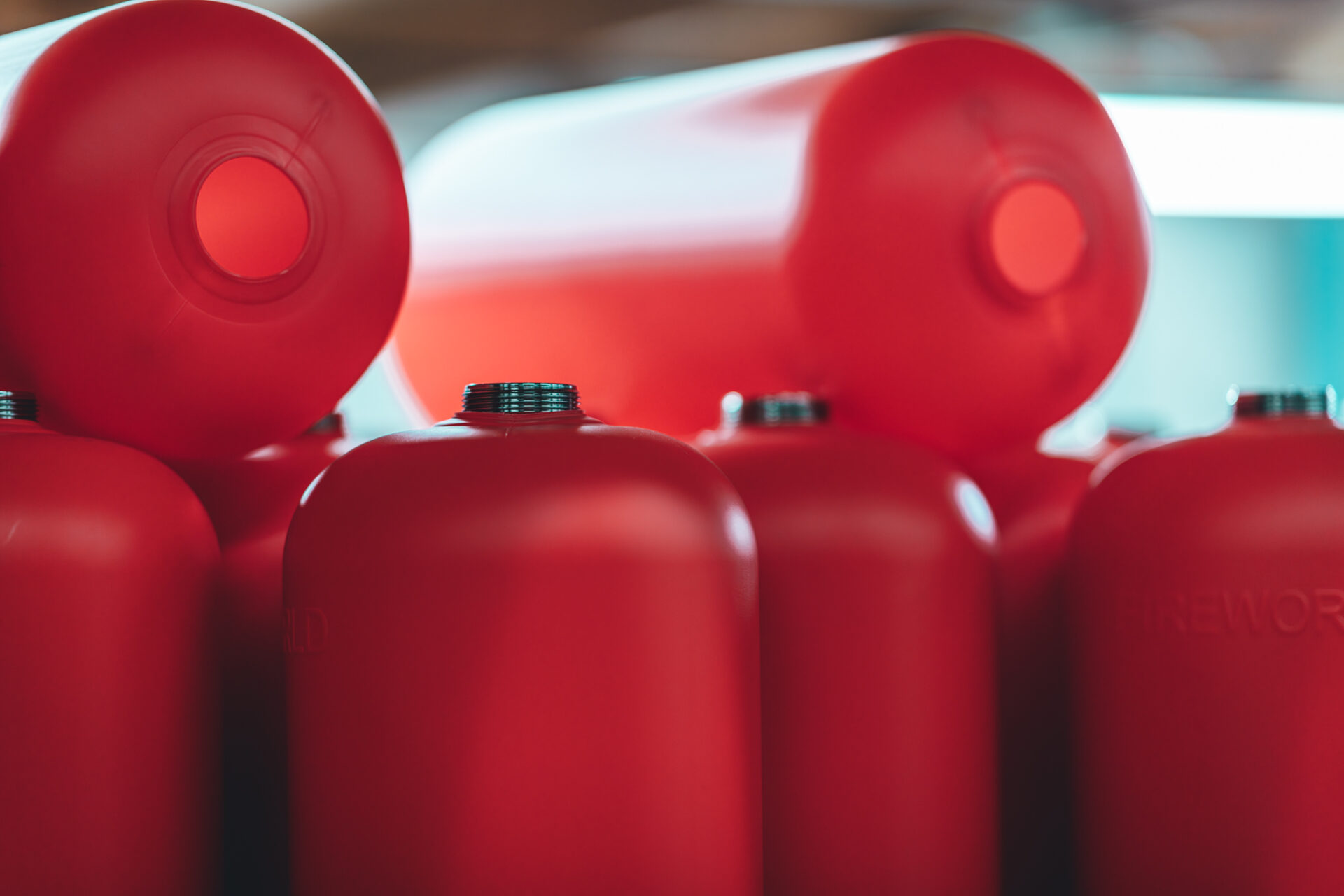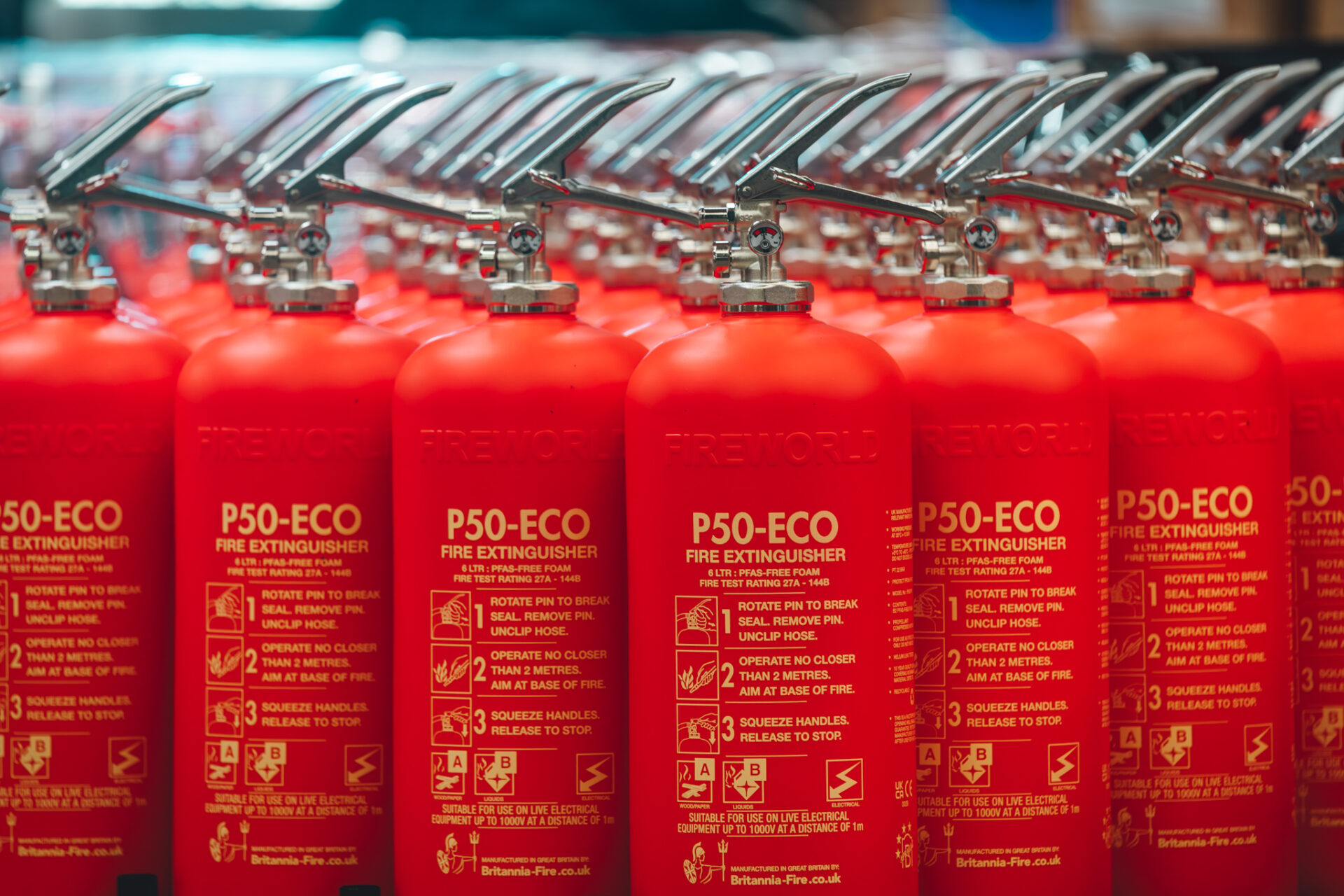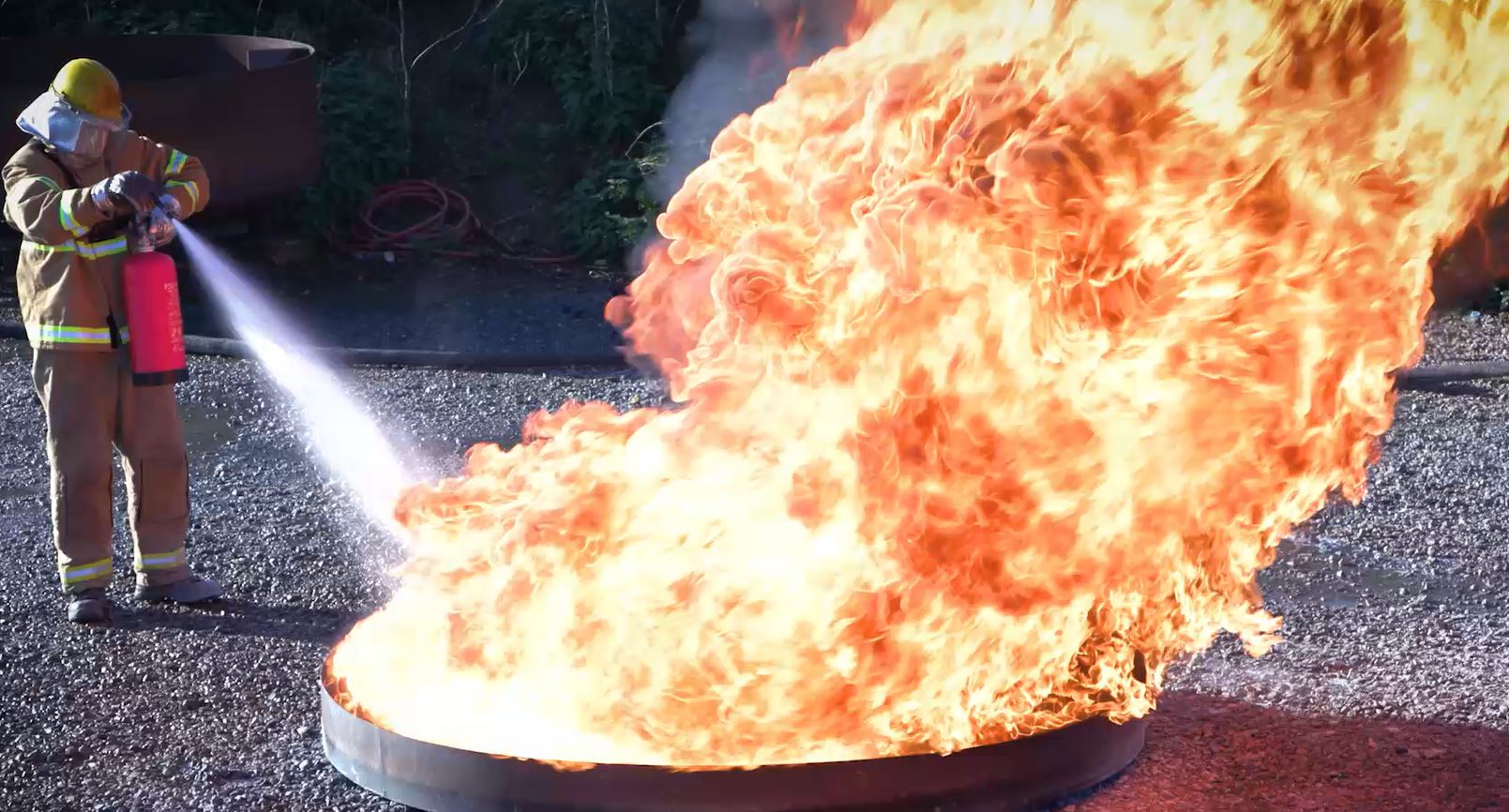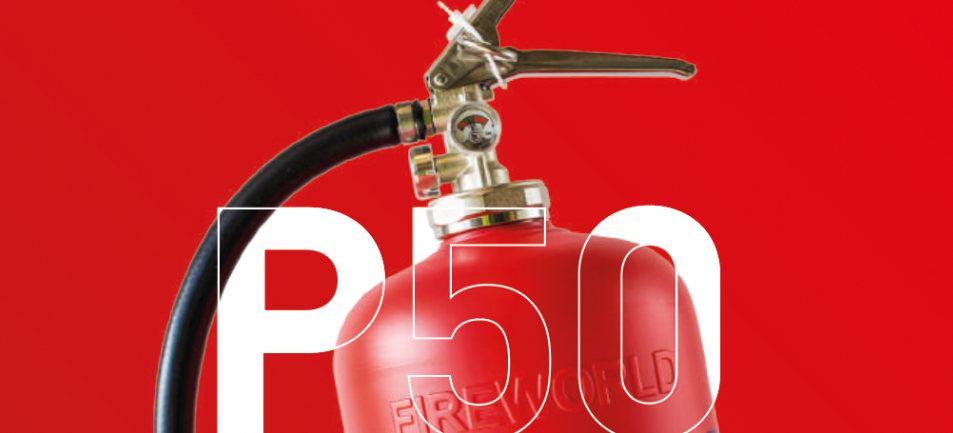The Future is P50
January 22, 2025
Innovations in fire extinguisher design and technology mean we now have greener alternatives that considerably reduce carbon emissions and improve sustainability. Easier to maintain, they also provide long term cost-savings for the customer. So why has the fire protection industry been slow to embrace this change? Andy Spence, Joint Managing Director of Britannia Fire, looks at the issues:
Fire extinguishers play a vital role in fire protection. They are essential for supressing fire in its early stages, and can help to prevent catastrophic damage and harm. But there is so much more we can do as an industry to make their manufacture, supply and maintenance more environmentally friendly. The sector has been slow to change course but is waking up to the fact that change is inevitable, and that viable solutions are now readily available.
The future is composite
Traditional, steel fire extinguishers last around 10 years, but are prone to corrosion and must be serviced annually to ensure they remain fit for purpose. We first started manufacturing steel fire extinguishers at our Britannia Fire factory in Norfolk back in 1970 and built a highly successful and respected brand around these early models and successive versions.
But by embracing the introduction of new materials and technology, our founder Roger Carr, saw an opportunity to create a new model out of composite material that would be corrosion resistant and lightweight, with no annual service required. Launched in 2010, the P50 was the first composite fire extinguisher of its kind, and has since been sold around the globe, with demand continuing to outstrip supply. Last year, we took the significant step to discontinue the production of our original metal ranges altogether to focus solely on increasing supply of our P50 range. It’s a superior product which provides a win-win for the customer and the environment.
Thanks to their anti-corrosion properties, composite fire extinguishers like the P50 can last 20 years: typically twice as long as metal varieties. They don’t need to be serviced by a technician every year. Instead, they just need simple, regular checks from a designated competent person, which can be done with the help of our dedicated App. After 10 years, factory refurbishment will extend the life of a P50 for another 10 years. As well as saving time and money on annual services and replacements, these extinguishers are much better for the environment, with a reduction in wastage, and in carbon emissions around servicing.
Despite these innovations and the success of the P50, it’s still the case that the vast majority of fire extinguishers currently in use across the UK and Europe are traditional metal designs. Most will have been manufactured in China, and shipped thousands of miles before reaching the customer. They are sold cheaply but on annual servicing contracts, which bring in an attractive revenue many suppliers are reluctant to give up.
The benefit of switching to the P50 was huge, The P50 ticks all the boxes thanks to it’s low-carbon, low-waste manufacturing process and servicing requirements. It’s also long-lasting, non-toxic and recyclable. The switch to P50 also means we’re ahead of the game and ready for the impending PFAS ban.
Billy Cunningham Director of Fire Safety at Landsec
An end to PFAS chemicals
AFFF fire extinguishers containing PFAS are the most common type of foam extinguishers. These harmful ‘forever chemicals’ don’t break down in the environment, can disrupt biological processes, and are toxic to some species. Measures are being taken across the globe to reduce, restrict and phase out the use of PFAS, such as the UN’s Stockholm Convention, which is a global treaty to protect human health and the environment from persistent organic pollutants. Europe is taking the most progressive approach to regulation with a ban on firefighting foams containing PFAS due to come into force by 2030[1], and the UK is expected to follow this lead.
Britannia Fire is proud to be leading the way in championing environmentally friendly fire safety products. In 2023, we launched our PFAS-free foam P50 model, which works effectively without the use of harmful fluoro chemicals. Many companies and organisations are ahead of the game and choosing PFAS free models to help reduce their environmental impact. UK government regulation is anticipated later this year, which will prohibit the manufacture and sale of fire extinguishers containing PFAS. This is absolutely the right course of action, ensuring that as an industry we are all playing our part in supplying and promoting more sustainable products.
[1]Commission restricts use of a sub-group of PFAS chemicals to protect human health and the environment – European Commission

Multi-use extinguishers
Recent technologies and innovation have also helped to simplify the various types of fire extinguishers required and their applications. This reduces the number of fire extinguishers required in certain locations, with a positive impact on both the environment and the customer’s bottom line.
Historically, customers would be required to install a combination of water-based, dry powder, or CO2 fire extinguishers depending on whether a fire in that location is likely to involve wood and textiles, electrical equipment or cooking oils. Frequently, two or more models were installed side by side, with instructions for the user on which to operate.
Thankfully, a number of multipurpose options are now available, making installation and use much more straightforward. Our P50 Water Mist extinguisher is safe to use on carbonaceous (Class A) fires, as well as electrical fires, so it’s perfect for offices, hotels, shops, churches and rental properties, for example. It contains de-ionised water, which means it leaves almost no residue after use.
Our P50 PFAS-Free Foam model goes even further, extinguishing Class A (carbonaceous) fires, Class B (flammable liquids) fires, Class F (fats and oils) and has also passed the EN3 test for use on live electrical equipment up to 1000V. This is suitable for garages, farms, chemical storage, and large event venues, for example.
Heathrow Airport recently replaced its multiple sets of two extinguishers with P50 Foam multi-purpose units as part of its sustainability strategy. These have saved the airport more than £1m and will need minimal servicing for a decade. Providing one multi-purpose option is also much more user-friendly, particularly in a busy airport with worldwide travellers speaking many different languages!
Despite these innovations, too many companies and organisations are still wasting time and money on unnecessary annual servicing and multiple units. Some guidelines, even those issued by the British Standards Institute, have been slow to keep pace with innovations and still recommend outdated servicing practices. However, we can assure our customers that Britannia Fire P50 extinguishers conform to Pressure Equipment Regulations and European standards, they are BS EN3-7 certified and have a BSI Kitemark to show they are safe and legal to use in the UK.


Responsible disposal
At Britannia Fire, we’ve always taken our environmental responsibilities seriously and are committed to doing all we can to minimise our carbon footprint, including investing in solar panels for our production plants as part of our mission to achieve carbon net zero manufacturing. We’re also committed to helping our customers with their own sustainability targets. Our P50 composite range is easily recyclable. Part of our offer also includes a recycling and scrappage service, helping customers dispose of their obsolete metal and PFAS-containing extinguishers in a responsible way. We take the old units off their hands and recycle what we can, disposing of the remainder responsibly.
Encouraging change
Clearly, it’s time for the industry to fully embrace innovations that can make the fire extinguisher market more sustainable. PFAS regulations will help expediate this. In addition, we need to raise awareness amongst those responsible for fire safety, providing them with the right training, tools and guidance to source the most suitable equipment for their fire safety needs whilst minimising impact on the environment.

